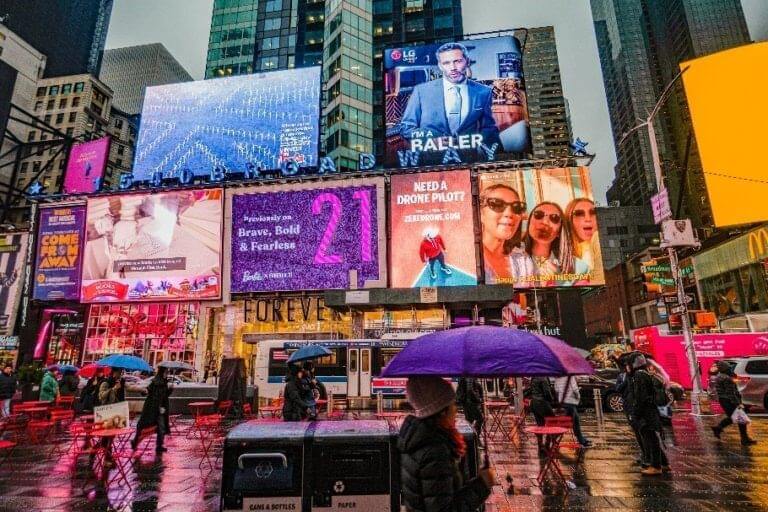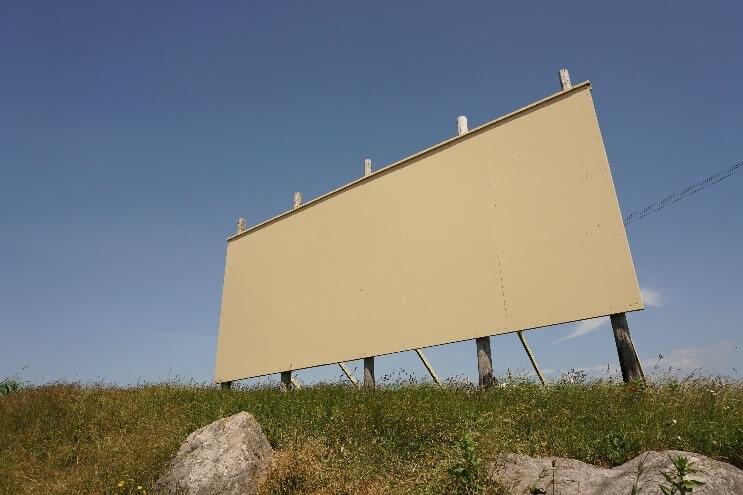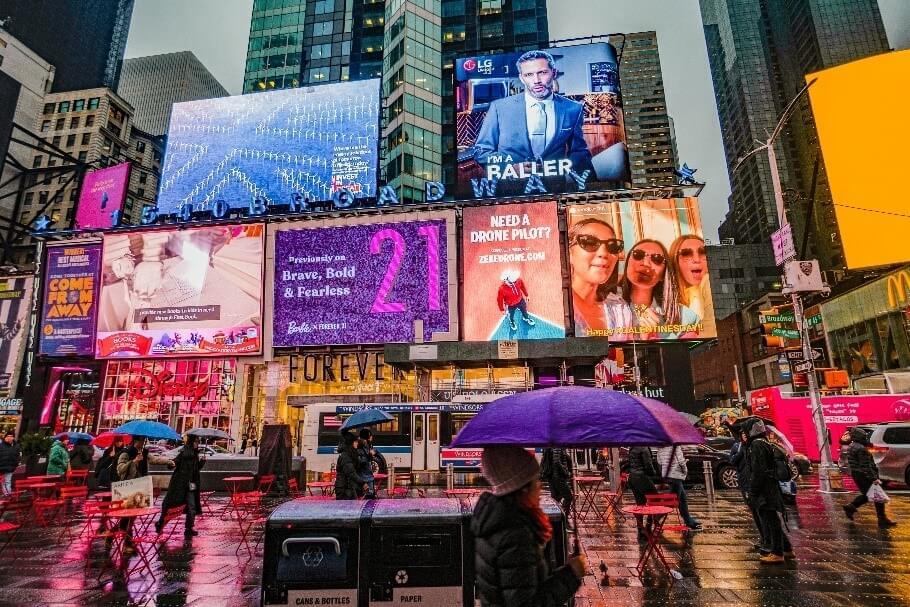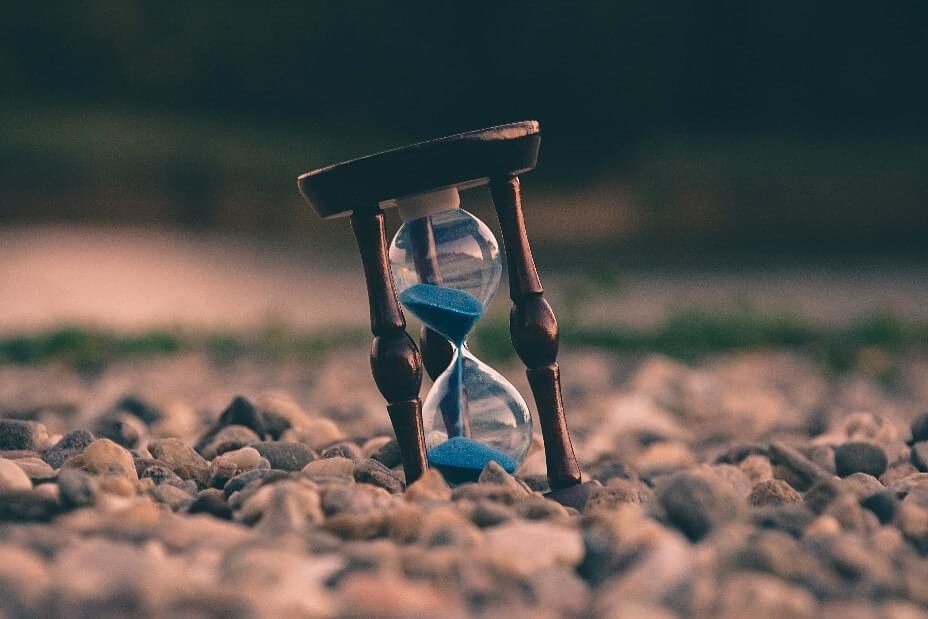
When you go out to eat there’s a menu online and in-store that contains every item served and their costs. When you look for a new car, automotive brands have a catalogue of their vehicles online & at dealerships. But where do you go to look for how much billboards cost?
Determining the cost of a billboard isn’t as simple as looking up a menu of billboard formats. Brands must navigate the following to determine the cost of a billboard:
- Designing costs: The service fee to create a billboard’s graphic design.
- Productions costs: The cost associated with printing billboards.
- Billboard suppliers: Companies that own, rent, or outsource billboard space for advertisers to use.
To determine how much a billboard costs, let’s examine the factors that contribute to its price.

Designing costs
There are a variety of options brands can utilize to captivate traffic passing by billboards besides already having an optimal location. Before hiring a printing company to create their billboard, brands must strategize a creative execution for the graphic design for a billboard. Design and creative executions are most effective when advertisers use in-house graphic designers or outsource a professional design firm, creative boutique, or advertising agency. Skilled graphic designers are experienced with billboard designs and will take into consideration the angle of the billboard, location, lighting, the product being advertised, and the target audience. Ultimately the content the creative team decides to green light for each billboard is crucial to determining the price of a billboard.
If the content of the billboard is just a still image that only uses eye-catching visuals & copy write. The billboard used will likely be a static or trivision format as the brand wouldn’t benefit from paying for a more expensive digital billboard that’s likely shared by other advertising brands.
However if the content of the billboard requires animations, brands will have to use digital billboards because traditional static and trivision billboards are unable to display videos or animations. The cost of creating the graphic design for the billboard will amount to $500-$1000.
Production costs
When establishing a budget for OOH advertising, brands can’t overlook the billboard’s formatting. Digital formats charge up to six times more than their traditional counterparts. Deciding which format to use while in the budgeting phase can be the difference between an effective Return on investment (ROI) and explaining to your boss why you’re over-budget. Let’s take a look at 3 key formats to consider when planning an OOH advertising campaign:
Static billboards
The most traditional of the three billboard formats is the static billboard. Static billboards cost $300-$500 to print and is still an effective and cost-efficient format despite its flashier digital counterpart. Billboards need to be sturdy and have to be capable of withstanding precipitation, temperature changes, and time. Today static billboards are often printed using a material called Polyvinyl Chloride. This plastic-like material is strong enough to withstand Canadian weather and won’t fade in colour, so brands don’t have to worry about their billboard deteriorating.

Digital billboards
Despite being the highest priced format, digital billboards are the most attractive and engaging. They’re are comprised of light-emitting diodes (LEDs) that are able to display moving visuals. This gives digital billboards a huge advantage at gathering impressions because digital billboards are capable of displaying more than one visual and call to action. Today’s innovative technology allows digital billboards to do more than just display brightly lit videos though. They are now capable of live streaming data, transitioning to other advertisements, and can even interact with mobile QR scanners. Digital billboards are by far the most effective billboard format currently available in the market but can only be utilized by brands with big advertising budgets.
Trivision billboards
Brands that are looking to still utilize billboards but are working with smaller budgets can still take advantage of OOH mediums. Trivision billboards are an OOH cost efficient alternative if your ad budget prevents you from using static and digital billboards. Trivision billboards are mechanical, three-sided prisms that contain three separate advertisements due to their 3-sided shape. What makes trivision billboards so cost-effective is the opportunity for three different brands to share and pay for the billboard rental space at the same time. Brands can also negotiate if they wish to advertise on more than one side of a trivision billboard. This allows a company to advertise three separate brands or three individual advertisements from the same brand.
Billboard size
The size of the billboard also plays a role in calculating its cost. Based off printing material alone, the difference between the price of a vertical poster and that of a super board is quite large. Brands should expect to pay $0.50 per square foot of vinyl material which makes a 16’ H x 12’ W vertical poster far cheaper than a 14’ H x 48’ W super board.

Billboard suppliers
Once you’ve finished creating a design for your billboard and have predetermined the formatting of your billboard, its now time to contact a billboard supplier company. Billboard suppliers are companies who own or rent property that’s legally zoned to have a billboard erected. Laws pertaining to billboards are municipal, meaning that each city in Canada has different bi laws.
It’s paramount to have a dialogue with potential billboard suppliers as the prices for geo-located billboards are nearly 100% of the time publicly unavailable. Opening a dialogue with a billboard supplier also gives advertisers the chance to hear about promotions, cost effective options, and negotiate for an optimal billboard location. Brands can also quote other billboard suppliers to get a better price on their billboard.
Frequency is another factor that must be discussed with the billboard supplier. Four weeks is typically the minimum amount of time billboard suppliers will allow advertisers to rent on static or trivision billboards. Because digital billboards don’t require people to tear down and erect another billboard, Digital billboards have a far more frequency options available to advertisers. Some well known geo-locations in major cities have billboards (Static, trivision, & digital) that are under contract to host only one company’s brands.
Static billboard advantages
Static billboards are the most commonly seen and erected billboard format in Canada. Because they’re so common, advertisers can rely on OOH advertisements in both urban and rural areas of Canada. Static billboards are very flexible for brands that are seeking to rent billboards for longer than average periods of time. Unlike most digital billboards, advertisers (If they have the budget) are able to rent billboards 365 days out of the year.
Another advantage of static billboards is that they don’t change their message while your ad is launched. Commuters will be able to see your ad coming back and forth, creating higher frequency than a digital ad that transitions through other brand’s ads. Despite productions costs being higher than digital billboards, renting the ad space is significantly less expensive than its digital alternative.
Digital billboard advantages
Digital billboards have a plethora of benefits that advertisers have been using to collect millions of more impressions than its static & trivision counterparts. Firstly the lead times are drastically shorter in comparison to static & trivision billboards. Shorter lead times allow advertisers more time to develop the graphics that will be displayed in their digital billboard advertisement.
Arguably the biggest advantage that makes digital billboards stand out from other OOH mediums is its flexibility. Just how flexible are digital billboards? The ads displayed can be edited both before and after the launch of the advertisement, this allows marketers to tweak graphics on the billboard if changes are needed. Brands are also able to set ads to play during specific times to promote products associated with the current time.
Unlike static and trivision billboards, Digital billboards often run for shorter frequencies; allowing brands to rent billboards for less than a 4-week period if that’s optimal for their advertising campaign. Brands are able to select certain days of the week to run their ad and can even have the option of running their ad for less than one week depending on the billboard supplier. This is all possible because placing your ad on a digital billboard doesn’t require hired workers to set up and remove your printed ad, placing your ad on a digital billboard is as easy as clicking send.
Trivision billboard advantages Aside from being satisfying to watch the prisms rotate to the next ad, trivision billboards is the perfect billboard format for brands with a small to moderate ad budget, looking to include an OOH medium in their advertising campaign. Due to trivision billboards being comprised of prisms, one billboard can send three unique marketing messages to passing traffic unlike static billboards which can only emit one advertisement. As stated earlier, advertisers can take advantage of trivision billboards by renting more than one prism side.

Variables to keep in mind before buying a billboard
Because billboards are mediums that are completely exposed outside, there are some variables that advertisers must be aware of before purchasing a new billboard.
Weather
The variable that has the most likely chance of negatively impacting the quality or performance of your billboard is the weather. Canada is host to a diverse amount of tumultuous weather ranging from snowstorms, to heatwaves. Although Canadian weather isn’t hazardous for billboards most of the year, there have been instances in Canada where the weather has damaged, blown over, and even destroyed billboards.
Before brands launch their ads. It’s important for advertisers to research what the environment is typically like in the geo-location of the billboard. Doing your due diligence will save you time and money. Knowing that a location is going to receive weather that will keep people indoors for a long period of time can save yourself from spending thousands without a profitable ROI.
Time of year
Buying a billboard during the holiday season or other times in the year that have an increase in the volume of traffic that passed by billboards will directly impact the cost of buying a billboard. Holidays that are famous for incorporating elements of consumerism like Christmas often see a large spike in business. It makes sense that the price of buying a billboard will increase if the total impressions of billboards during those times of the year increase as well. Advertisers should also be aware that certain holidays require its followers to stay indoors for worship. Which may cause a decrease in the cost of purchasing a billboard.

How much does it actually cost to buy a billboard?
It can cost as little as a few thousand, or as much as hundreds of thousands of dollars. The cost of a billboard is completely dependent on the choices made pertaining to who is hired to do graphic design, the size of the billboard, the format, and its location. Advertisers must always be aware that the cost of a billboard is fluid. There will never be a set price & the prices on rate cards are always negotiable.
Conclusion
The cost to buy a billboard is fluid, it’s completely dependent on how you customize the billboard & uncontrollable variables that may occur while your ad is running on a static, trivision, or digital billboard.


